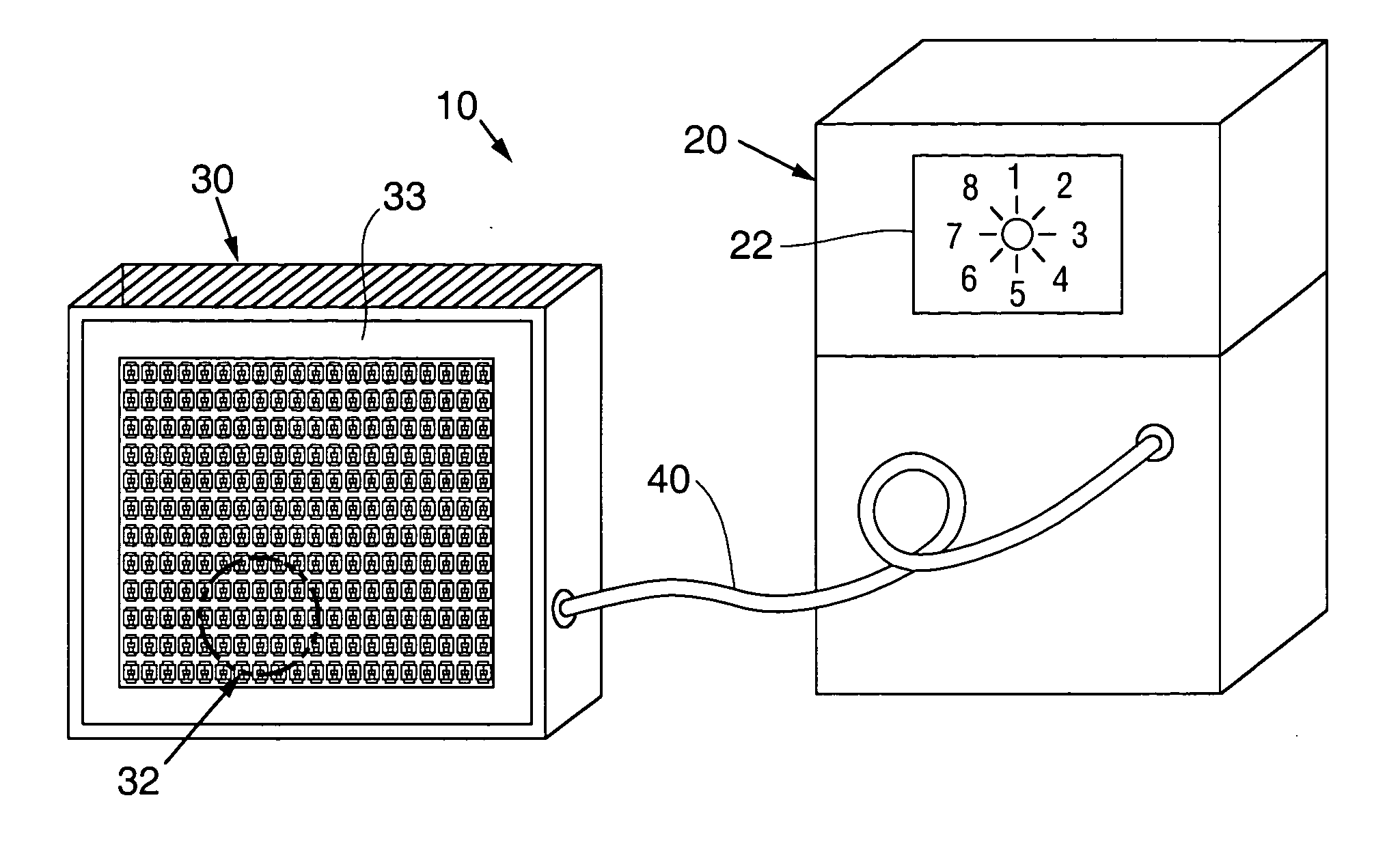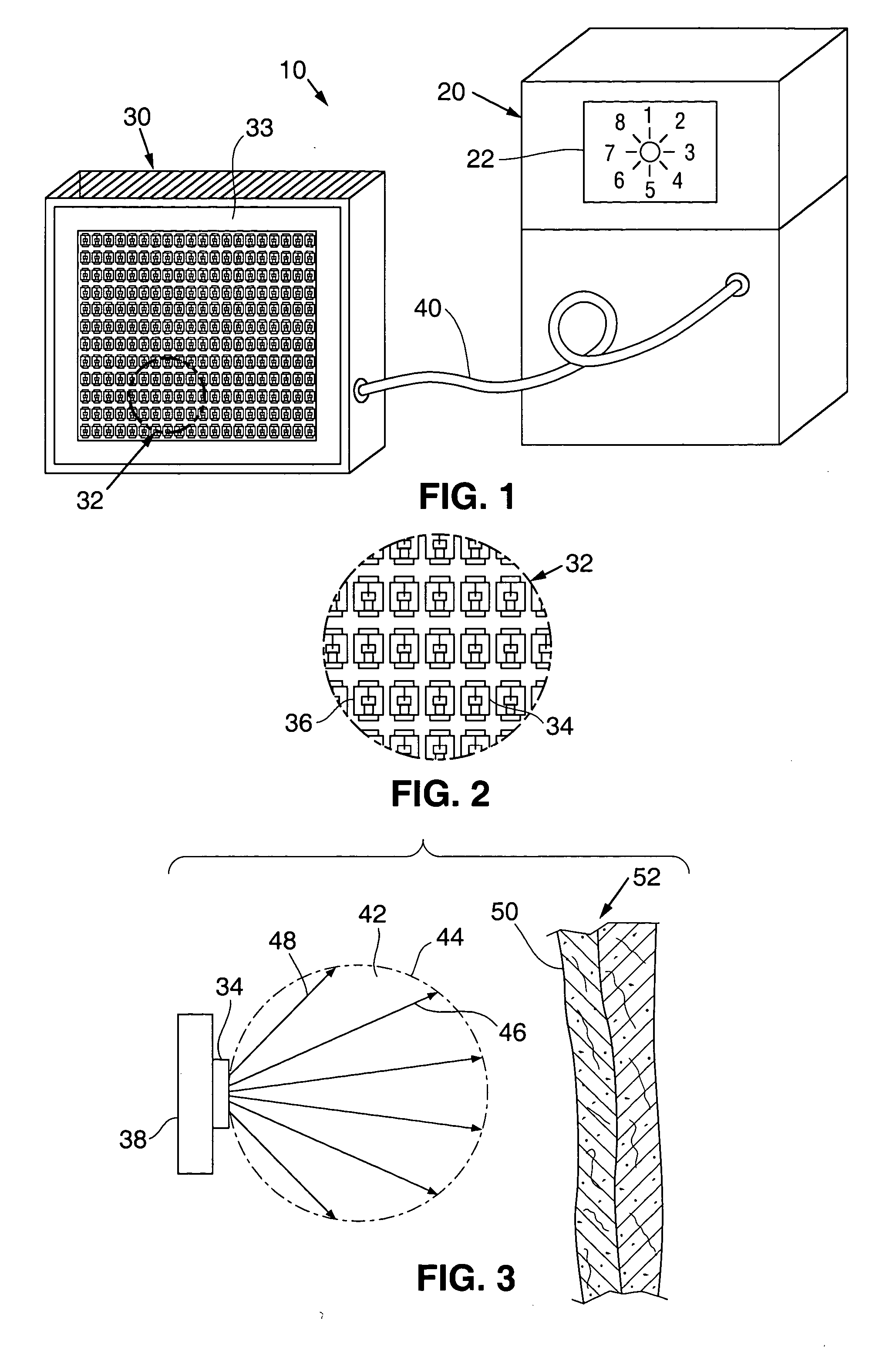System and method for treating exposed tissue with light emitting diodes
a technology of light-emitting diodes and tissue, which is applied in the field of light-emitting techniques, can solve the problems of increased government regulation of lasers, high manufacturing costs of lasers, and difficult construction and maintenan
- Summary
- Abstract
- Description
- Claims
- Application Information
AI Technical Summary
Problems solved by technology
Method used
Image
Examples
Embodiment Construction
[0037] The present invention provides improved systems and methods for treatment of tissue with light emitted from LEDs. By closely positioning several (often several hundred) LEDs, therapeutic levels of light energy can be achieved with LEDs without using expensive and complex light delivery systems. By achieving high energy densities without a complex delivery system, system cost is kept to desirably low levels to advantageously permit commercial use of LED treatment systems. The present invention makes use of desirable LED properties such as use of selected wavelengths while avoiding the disadvantages associated with lasers and lamps.
[0038] In an embodiment, the invention includes an apparatus using high flux LED sources to treat acne, acne vulgaris and other forms of active acne. The invention includes a selection of treatment wavelengths based on an understanding of a photodestructively targeted acne bacterium, Propionibacterium Acnes. The invention may also be used for other ...
PUM
 Login to View More
Login to View More Abstract
Description
Claims
Application Information
 Login to View More
Login to View More - R&D
- Intellectual Property
- Life Sciences
- Materials
- Tech Scout
- Unparalleled Data Quality
- Higher Quality Content
- 60% Fewer Hallucinations
Browse by: Latest US Patents, China's latest patents, Technical Efficacy Thesaurus, Application Domain, Technology Topic, Popular Technical Reports.
© 2025 PatSnap. All rights reserved.Legal|Privacy policy|Modern Slavery Act Transparency Statement|Sitemap|About US| Contact US: help@patsnap.com



